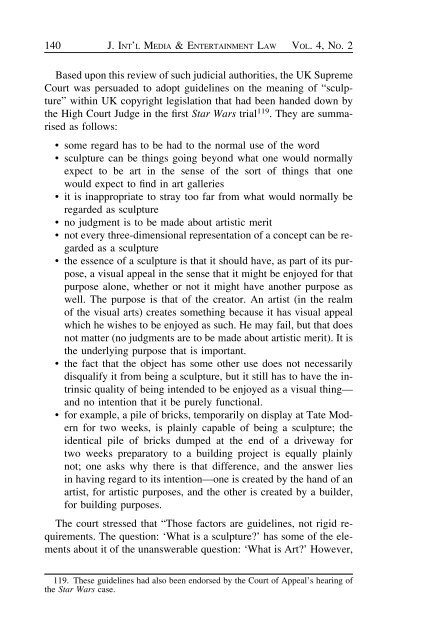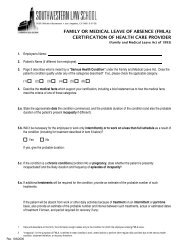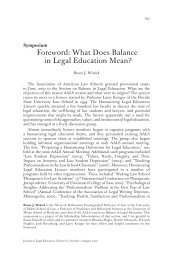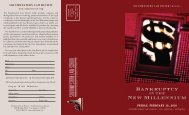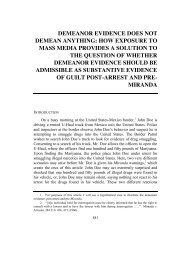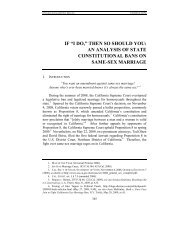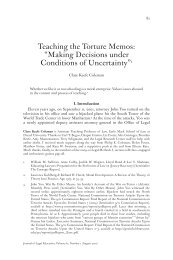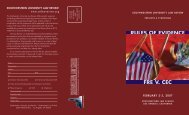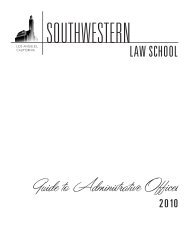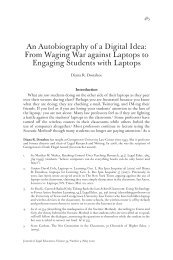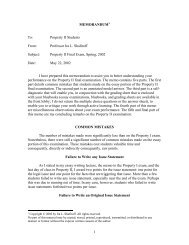What is Art? - Southwestern Law School
What is Art? - Southwestern Law School
What is Art? - Southwestern Law School
- No tags were found...
Create successful ePaper yourself
Turn your PDF publications into a flip-book with our unique Google optimized e-Paper software.
140 J. INT’L MEDIA &ENTERTAINMENT LAW VOL. 4,NO. 2Based upon th<strong>is</strong> review of such judicial authorities, the UK SupremeCourt was persuaded to adopt guidelines on the meaning of “sculpture”within UK copyright leg<strong>is</strong>lation that had been handed down bythe High Court Judge in the first Star Wars trial 119 . They are summar<strong>is</strong>edas follows:• some regard has to be had to the normal use of the word• sculpture can be things going beyond what one would normallyexpect to be art in the sense of the sort of things that onewould expect to find in art galleries• it <strong>is</strong> inappropriate to stray too far from what would normally beregarded as sculpture• no judgment <strong>is</strong> to be made about art<strong>is</strong>tic merit• not every three-dimensional representation of a concept can be regardedas a sculpture• the essence of a sculpture <strong>is</strong> that it should have, as part of its purpose,a v<strong>is</strong>ual appeal in the sense that it might be enjoyed for thatpurpose alone, whether or not it might have another purpose aswell. The purpose <strong>is</strong> that of the creator. An art<strong>is</strong>t (in the realmof the v<strong>is</strong>ual arts) creates something because it has v<strong>is</strong>ual appealwhich he w<strong>is</strong>hes to be enjoyed as such. He may fail, but that doesnot matter (no judgments are to be made about art<strong>is</strong>tic merit). It <strong>is</strong>the underlying purpose that <strong>is</strong> important.• the fact that the object has some other use does not necessarilyd<strong>is</strong>qualify it from being a sculpture, but it still has to have the intrinsicquality of being intended to be enjoyed as a v<strong>is</strong>ual thing—and no intention that it be purely functional.• for example, a pile of bricks, temporarily on d<strong>is</strong>play at Tate Modernfor two weeks, <strong>is</strong> plainly capable of being a sculpture; theidentical pile of bricks dumped at the end of a driveway fortwo weeks preparatory to a building project <strong>is</strong> equally plainlynot; one asks why there <strong>is</strong> that difference, and the answer liesin having regard to its intention—one <strong>is</strong> created by the hand of anart<strong>is</strong>t, for art<strong>is</strong>tic purposes, and the other <strong>is</strong> created by a builder,for building purposes.The court stressed that “Those factors are guidelines, not rigid requirements.The question: ‘<strong>What</strong> <strong>is</strong> a sculpture?’ has some of the elementsabout it of the unanswerable question: ‘<strong>What</strong> <strong>is</strong> <strong>Art</strong>?’ However,119. These guidelines had also been endorsed by the Court of Appeal’s hearing ofthe Star Wars case.


